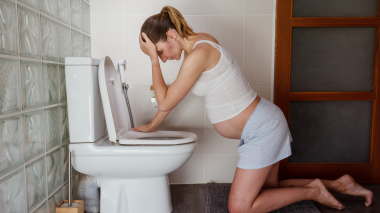A first-time patient of Atrium Health Hospital at Home realizes how easy – and effective – at-home care can be.
When he was a young man, Michael Petruska received wise advice from his grandmother: Hang onto your ties for 20 years because they’ll always come back in style. Last summer, Michael thought of her words when healthcare providers came to his home to treat him for COVID-19. After all, her advice was more about history than fashion.
“I was thinking, when I grew up, our doctor would make house calls and come to the home,” Michael says. “And here we are again, doing the same thing.”
But Michael’s grandmother probably didn’t picture house calls quite like this.
This summer, Michael became a patient of Atrium Health Hospital at Home. Through a combination of old-time house calls and innovative technology, at-home hospital patients could recover from COVID-19 in the comfort of home without a hospital stay.
Choosing At-home Care
When Michael first got his positive COVID-19 test in early July, he hoped his sickness wouldn’t be a big deal. He felt well enough that day, if a little run down. But each day, he felt a little worse. By the fourth day, he couldn’t get out of bed. His wife and his daughter – who’s a physician assistant – convinced him to go to the emergency department. There, Michael had an EKG and X-rays, which revealed lung damage but no pneumonia. The doctor told him that he had two options to continue his care: He could remain in the hospital or he could go home to become an Atrium Health Hospital at Home patient.
“I’ll go home. I don’t want to be in a petri dish,” Michael joked with the doctor, who joked right back. “The doctor smiled, and he told me, ‘No, no, no, you don’t understand. You are the petri dish.’”
Before Michael went home, he received the equipment he needed to monitor his health, including a blood pressure machine, a pulse oximeter to measure his oxygen levels, and a thermometer for regular temperature checks. Every four to six hours, Michael or his wife would enter his numbers in an online portal, allowing providers in the hospital to keep up with him several times a day, just as if he was in the hospital. Nurses called him frequently to check in on him.
“It was cool. The system was very simple, and it became our regimen,” Michael says.
Each morning, an EMT or a nurse would come to Michael’s house. They’d draw blood and measure his vitals, then they’d connect with a doctor for a video conference. The EMT and nurse would handle all of the technology through their own equipment and even their own secure Internet connection, so Michael could simply be a patient.
During the visits, Michael learned breathing exercises to ease his symptoms and doctors would adjust medication when necessary. When his oxygen levels dropped too low, paramedics brought an oxygen machine to him. After three days of using that machine at home, his oxygen returned to a better level.
“It worked out very well. They kept coming, and they kept taking care of me, I could see the light at the end of the tunnel, and I was very happy,” Michael says.
At a time when hospital visitation restrictions mean that COVID-19 patients can feel isolated from their families, these visits brought his family together. He calls his wife and daughter his “two personal angels” for helping him through the virus.
“During calls with the doctor, my wife would be in the back of the room, my daughter would sometimes join us online, and we would ask the doctor all kinds of questions,” he says. “Any questions we had were answered, and I was very satisfied with the virtual doctor.”
This was Michael’s first experience with at-home and virtual healthcare. “I’m of the generation where I call up and ask to talk to someone or request a hard copy,” he says. But the simplicity of this system showed him it’s an option he’d gladly use again.
A Long Road to Recovery
In July, Michael stayed home while he recovered from COVID-19. It took the month of August to regain about 75% of his strength. Strength is especially important to an engineer who works in home renovation and construction.
“My business partner and I will take an old house that has been abandoned and is in serious trouble, the kind that everybody else has walked away from because of the headaches. But we just see great opportunities and challenges,” he says. The two men will sometimes take a house down to the foundations and restore into a like-new home, ready for another chapter.
This work recalls what his grandmother told him: Old things always come around again, even if they might look a little different. It recalls his COVID recovery, too: take old-fashioned home visits, add new technology, and bring healthcare into its next chapter.
Today, Michael’s happily back to work renovating his next house, although some days end a little early when his energy flags.
“But I’m walking around, I’m doing my job,” Michael says. “I do have to relax more often, but it’s good. Life is good.”
Stay up to date on COVID-19 and learn how to access care in our COVID-19 Resource Center.



